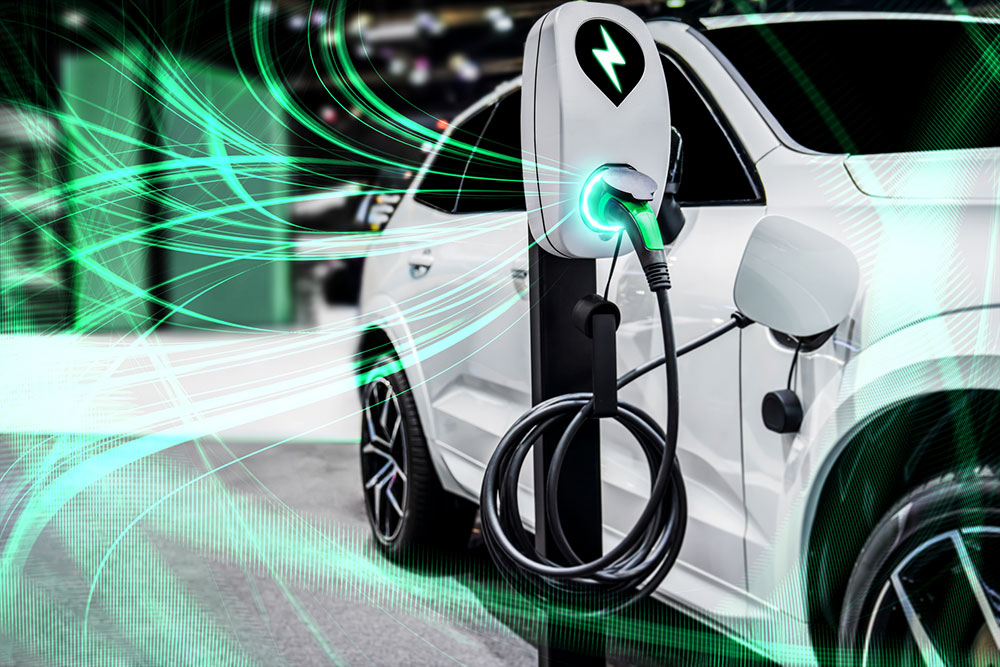Tech track: New battery breakthrough
RACQ Principal Technical Researcher Andrew Kirk brings you the latest in motoring technology.

A project to develop new battery technology in Australia that promises less weight, faster charging, longer life and better environmental credentials than lithium-ion has yielded significant improvements in energy and power density, opening the door to commercialisation.
Brisbane-based Graphene Manufacturing Group’s graphene aluminium-ion battery (GAIB) technology may change electric vehicle technology as we know it by offering a far superior product compared with lithium-ion.
The breakthrough has potentially far-reaching positive effects nationally as well as for GMG itself and according to the company, ongoing development from GMG’s battery team has resulted in significant GAIB performance increases as well as cell and graphene production improvements this year.
Calculated energy density of the GAIB technology has increased to 290-310Wh/kg, up 93% since the earlier battery update mid-last year.
Performance data was calculated from GMG’s specific coin cell design and testing data, which has been separately verified by the Australian Institute for Bioengineering and Nanotechnology at the University of Queensland (UQ) measured against other aluminium-ion batteries and two commonly used lithium-ion batteries produced and used worldwide.
Power density has also increased to about 9350W/kg, up 33% since the previous update.
The firm has reported battery cell enhancements which engenders a growing confidence in the repeatability of battery-grade quality graphene production at scale, developments that have allowed GMG to start the next steps toward commercialisation.
GMG said graphene aluminium-ion batteries offer `three to five times’ the energy density of lithium-ion cells and cannot catch fire, offering obvious safety benefits in vehicles both in the event of a collision and where thermal runaway events can cause significant fires.
Graphene aluminium-ion batteries are also not lethal if swallowed, are completely recyclable and require no cobalt, copper, lithium, manganese or other rare earth metals to be mined for their production.
The manufacturing process of GAIB produces hydrogen as a by-product, offering further uses within the transportation industry to power fuel cell electric vehicles (FCEVs).
Cooler charging technology
A cooling technology developed by NASA for use in space could significantly speed up the charging of electric cars in the future.
As NASA explained in a blog post, the cooling mechanism developed as part of the Flow Boiling and Condensation Experiment (FBCE) had the potential to reduce the charging time for electric car batteries to well under five minutes.
This would require a current of 1,400 amps, but this would currently overheat the cables.
In an experiment, the researchers have now applied FBCE technology to charging technology for electric cars by passing a dielectric liquid coolant through the charging cable.
According to NASA, a current of 2,400 amps could be achieved in the process.
Basically, the technology was developed because NASA needed to have precise “thermal control” on some components for future moon and Mars missions.
What the engineers mean: The sometimes extreme temperature differences between day and night in space must be compensated for so that technology and humans can survive under these conditions. Since these cooling components have to be as compact and light as possible, they could also be used for other applications on Earth, fast charging, for example.
Helping cars ‘communicate’
NXP Semiconductors has introduced the OrangeBox automotive-grade development platform, which integrates a wide variety of NXP wireless technologies, from broadcast radio, Wi-Fi 6 and Bluetooth, to secure car access with Ultra-Wideband (UWB) and Bluetooth Low Energy (BLE), and 802.11p-based V2X.
The OrangeBox is a single, security-enhanced, modular development platform that provides a unified interface between the vehicle’s gateway and its wired and wireless technologies.
By doing so, it provides a means for next-generation cars to communicate securely with the world around them.
Today’s cars are more connected than ever, utilising a variety of wireless technologies to provide drivers with everything from infotainment to advanced safety features.
However, these technologies are distributed throughout the vehicle’s architecture, creating a variety of challenges that will be exacerbated as more and more connectivity features are added, as well as expanding the cyber-attack surface.
OrangeBox unifies these current and emerging external wireless interfaces into a single, security-enhanced connectivity domain controller, which then connects to the secure vehicle gateway through NXP high-speed ethernet.
This consolidated, turn-key approach works to reduce development effort, optimises the movement of data across multiple communication interfaces, enables consistent, state-of-the-art security protection to be applied to all traffic entering the car, and eases the deployment of V2X and cloud applications such as over-the-air updates for software-defined vehicles.
Designed as a modular platform, OrangeBox provides OEMs and Tier-1s with the flexibility to adapt to various regional requirements for cellular connectivity and V2X, as well as enable in-field updates necessary to keep up with changing technologies.
This helps accelerate time-to-market, reduces complexity and provides a complete system reference design-ready for application deployment.
Related topics
Things to note
The information in this article has been prepared for general information purposes only and is not intended as legal advice or specific advice to any particular person. Any advice contained in the document is general advice, not intended as legal advice or professional advice and does not take into account any person’s particular circumstances. Before acting on anything based on this advice you should consider its appropriateness to you, having regard to your objectives and needs.
Insurance Products (excluding Travel Insurance) are issued by RACQ Insurance Limited ABN 50 009 704 152 (RACQI) and arranged by its agent, RACQ Distribution Services Pty Ltd (RDS) ABN 35 116 361 650, AFSL 567130 and RDS' authorised representatives (including RACQ Operations Pty Ltd ABN 80 009 663 414, AR No. 234978 (RACQO). Conditions, limits and exclusions apply. RDS and RACQO are in the RACQ group of companies. One of the companies in the RACQ group of companies has a minority shareholding in RACQI.
RDS and RACQO have not taken your personal objectives, circumstances or needs into account when preparing advice regarding insurance products and you will need to consider whether the advice is appropriate for you. Read the Product Disclosure Statement (PDS) and any applicable Supplementary PDS before making a purchase decision on this product. You can also access our Target Market Determinations on this website. RDS receives a commission from RACQI for the policies it arranges. RACQO receives fees paid for services it provides to RDS. Further details about remuneration are available on request prior to purchasing.
Banking and loan products issued by Members Banking Group Limited ABN 83 087 651 054 AFSL/Australian credit licence 241195 trading as RACQ Bank. Terms, conditions, fees, charges and lending policies apply. This is general advice only and may not be right for you. This information does not take your personal objectives, circumstances or needs into account. Read the disclosure documents for your selected product or service, including the Financial Services Guide and the Terms and Conditions, and consider if appropriate for you before deciding.
Except for RACQ Bank, any RACQ entity referred to on this page is not an authorised deposit-taking institution for the purposes of the Banking Act 1959 (Cth). That entity’s obligations do not represent deposits or other liabilities of RACQ Bank. RACQ Bank does not guarantee or otherwise provide assurance in respect of the obligations of that entity, unless noted otherwise.
RACQ Bank subscribes to the Customer Owned Banking Code of Practice which establishes higher standards than the law requires. The Code reflects modern consumer expectations and developments in approaches to issues such as consumer vulnerability, guarantors, and supporting customers through financial hardship. Please read our Customer Owned Banking Code of Practice page for more information.
RACQ Operations Pty Ltd (ABN 80 009 663 414 AR 000234978) and Members Travel Group Pty Ltd (ABN 45 144 538 803 AR 000432492) are acting as an Authorised Representative of the issuer of the insurance, Tokio Marine & Nichido Fire Insurance Co., Ltd. (ABN 80 000 438 291 AFSL 246 548). Any advice set out above is general in nature only, and does not take into account your objectives, financial situation or needs. Before purchasing any travel products, please consider the RACQ Travel Insurance Product Disclosure Statement (PDS) and the Target Market Determinations (TMDs) that apply to these products. Whilst the PDS outlines the Terms and Conditions of these products, the TMDs outline the intended class of customers that comprise the target market for these travel products. This will allow you to consider which products best suit your objectives, financial situation and needs and consider the products appropriateness to your personal circumstances. TMDs also outline matters involving the distribution and the review of these products. The PDS, Supplementary PDS and TMDs for each travel product can be found here.

